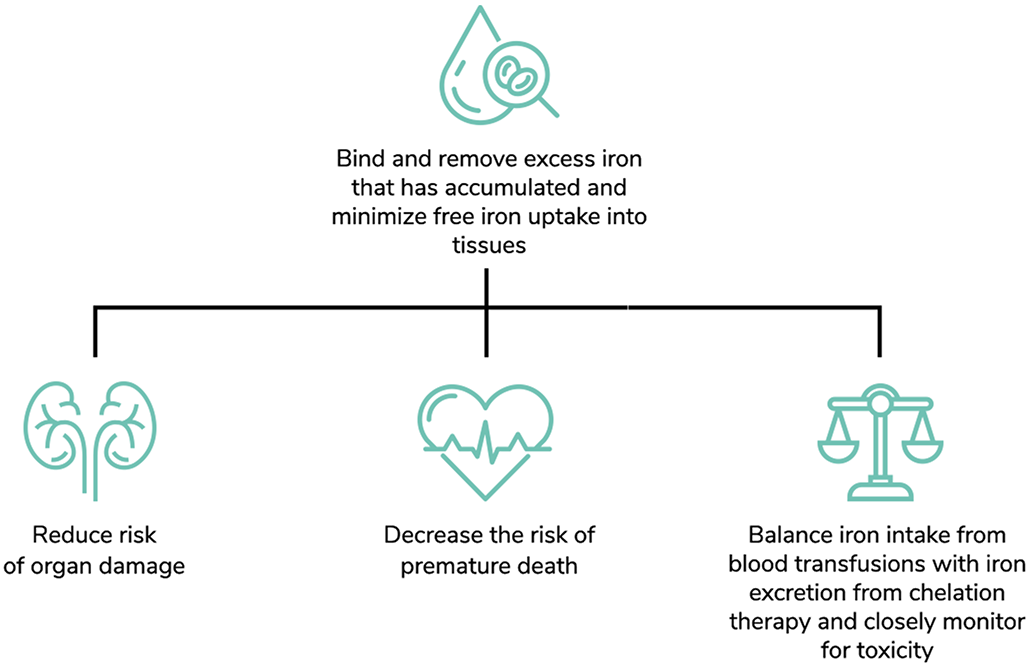Inadequate iron chelation increases the risk of life-threatening complications
Sickle cell patients receiving transfusions had 4.1 hospital stays per year vs. 2.1 for non-transfused patients.†
The death rate is 3X higher among sickle cell and thalassemia patients with transfusional iron overload.†
† Based on a study of patients who were either currently on or had received regular transfusion therapy and confirmed to have iron overload as defined by a liver iron concentration (LIC) of >10 mg/g dry weight or 3 serum ferritin values that averaged ≥2,000 ng/mL within the previous 12 months. 142 patients with thalassemia and 199 patients with sickle cell disease who received regular transfusions were included in the study group and compared with 64 non-treated sickle cell disease patients as controls. Click here to read the full study.
If removal of NTBI can be achieved, complications of iron overload can be reduced or eliminated
Objectives of iron chelation therapy
Insert text here...



Depending on the organ, it can take a long time to reduce iron.